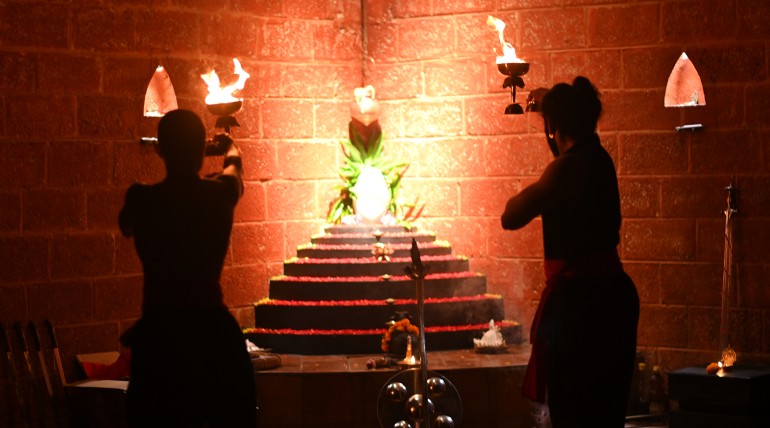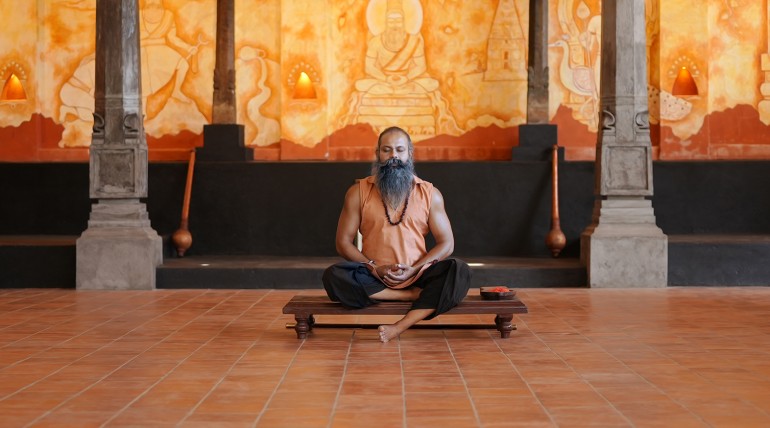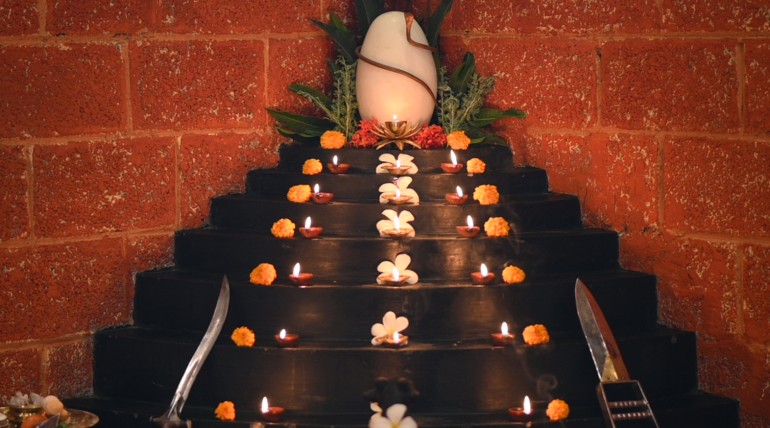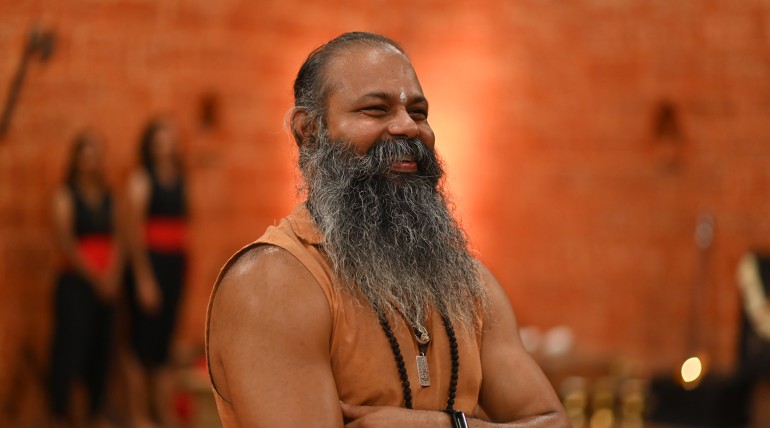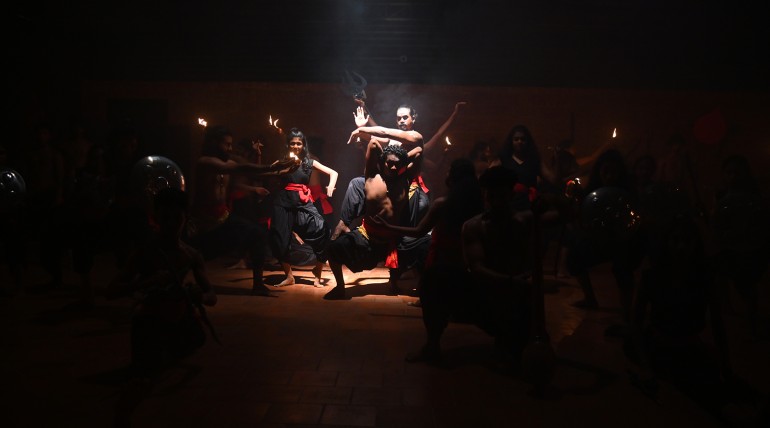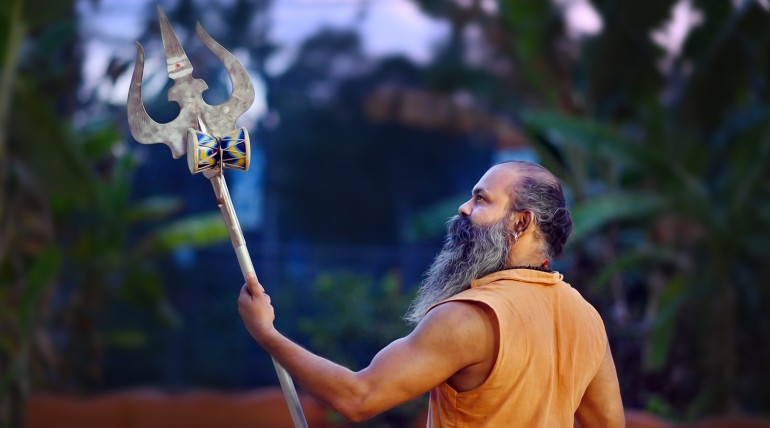

Siva Sampradayam
Siva Sampradayam
And the Evolution into Siddha Sampradayam
And the Evolution into Siddha Sampradayam

The Siva Sampradayam, or the tradition of devotion to Shiva, holds a significant place in the spiritual and cultural heritage of India. This tradition venerates Shiva as the embodiment of supreme consciousness and the source of all creation, preservation, and destruction. The Siva Sampradayam profoundly influences Hindu philosophy, mythology, and practical life, highlighting the intricate relationship between divine consciousness, human creativity, and spiritual discipline.
Central to the Siva Sampradayam is the belief that all sixty-four arts, including the ancient martial art of Kalaripayattu, originate from Shiva. According to legend, Kalaripayattu was inspired by Shiva's cosmic dance of destruction, the Tandava, performed in grief and fury over the death of his wife, Sati. Sage Agastya, observing the powerful movements of the Tandava, is believed to have codified these patterns into the martial art of Kalaripayattu. This connection underscores the profound influence of Shiva's divine movements on human creativity and the development of cultural practices.
Sage Agastya's contributions to the Siva Sampradayam are manifold. He is not only credited with establishing the foundational techniques of Kalaripayattu but also with advancing Siddha medicine, an ancient system of healing in South India. Siddha medicine, focusing on holistic health and the balance of body, mind, and spirit, integrates knowledge of herbs, minerals, and the body's vital points. Agastya's literary works, in Sanskrit and Tamil, further reflect his deep spiritual insights and practical wisdom, emphasizing the integration of spiritual teachings with everyday life.
Thirumoolar, another pivotal figure in the Siva Sampradayam, significantly enriched this tradition through his philosophical and yogic teachings. His seminal work, the Thirumandiram, consists of over 3,000 verses that form a cornerstone of Tamil Saiva Siddhanta philosophy. This text blends spiritual teachings, yogic practices, and ethical guidelines, addressing the nature of the soul, the universe, and the path to liberation (moksha). Thirumoolar's emphasis on inner purity and disciplined practice highlights the integral connection between physical health and spiritual well-being, guiding devotees towards self-realization and union with the divine.
In southern India, the Siva Sampradayam evolved into the Siddha Sampradayam, largely due to the works and influence of sages like Agastya. The Siddha Sampradayam integrates the spiritual teachings of the Siva Sampradayam with a focus on Varmakalai,
an ancient art of vital points used for martial arts and healing. This tradition emphasizes rigorous spiritual disciplines aimed at achieving enlightenment and perfecting the body, mind, and soul, leading practitioners towards a higher state of consciousness and union with Shiva.
The Nayanars, a group of 63 saintly devotees, also play a crucial role in the Siva Sampradayam. Their hymns, known as Tevaram, are central to Saiva worship and reflect deep spiritual experiences and unwavering dedication to Shiva. These devotional poems express profound love and reverence for Shiva, often depicting personal spiritual journeys and divine encounters. The Nayanars' contributions significantly shaped the cultural and religious fabric of South India, inspiring countless followers and spreading the teachings of Saivism.
The Siddha tradition is rich in scriptures that reflect its spiritual and medicinal wisdom. One such verse from sage Asthyas, Aadinool illustrates the depth and transmission of this knowledge:
Navamani mantharkentu nayakanemaytharkku Navamani umayal konchi sankaram cheyaventu Sivamani pothikai vazhum centil vazhmurukan Gurumani sidhavaidyam kooruvom adi sishyan
This verse highlights the lineage of divine knowledge, beginning with Shiva, who imparted it to Parvathi, his first disciple. Parvathi then taught their son Muruga, who in turn passed this great knowledge to Agastya. Agastya disseminated this wisdom for the welfare of the world, establishing a tradition that encompasses both spiritual enlightenment and practical healing.
In conclusion, the Siva Sampradayam is a profound and multifaceted spiritual heritage that has profoundly influenced India's cultural, philosophical, and spiritual landscape. Through the teachings of sages like Agastya and Thirumoolar, the holistic practices of the Siddha Sampradayam, and the devotional fervor of the Nayanars, this tradition offers timeless wisdom and pathways to spiritual realization. The Siva Sampradayam, evolving into the Siddha Sampradayam, encapsulates an integrated approach to spirituality, reflecting the intricate dance of divine consciousness and human creativity, and continues to inspire and guide seekers on their spiritual journeys.
The Siva Sampradayam, or the tradition of devotion to Shiva, holds a significant place in the spiritual and cultural heritage of India. This tradition venerates Shiva as the embodiment of supreme consciousness and the source of all creation, preservation, and destruction. The Siva Sampradayam profoundly influences Hindu philosophy, mythology, and practical life, highlighting the intricate relationship between divine consciousness, human creativity, and spiritual discipline.
Central to the Siva Sampradayam is the belief that all sixty-four arts, including the ancient martial art of Kalaripayattu, originate from Shiva. According to legend, Kalaripayattu was inspired by Shiva's cosmic dance of destruction, the Tandava, performed in grief and fury over the death of his wife, Sati. Sage Agastya, observing the powerful movements of the Tandava, is believed to have codified these patterns into the martial art of Kalaripayattu. This connection underscores the profound influence of Shiva's divine movements on human creativity and the development of cultural practices.
Sage Agastya's contributions to the Siva Sampradayam are manifold. He is not only credited with establishing the foundational techniques of Kalaripayattu but also with advancing Siddha medicine, an ancient system of healing in South India. Siddha medicine, focusing on holistic health and the balance of body, mind, and spirit, integrates knowledge of herbs, minerals, and the body's vital points. Agastya's literary works, in Sanskrit and Tamil, further reflect his deep spiritual insights and practical wisdom, emphasizing the integration of spiritual teachings with everyday life.
Thirumoolar, another pivotal figure in the Siva Sampradayam, significantly enriched this tradition through his philosophical and yogic teachings. His seminal work, the Thirumandiram, consists of over 3,000 verses that form a cornerstone of Tamil Saiva Siddhanta philosophy. This text blends spiritual teachings, yogic practices, and ethical guidelines, addressing the nature of the soul, the universe, and the path to liberation (moksha). Thirumoolar's emphasis on inner purity and disciplined practice highlights the integral connection between physical health and spiritual well-being, guiding devotees towards self-realization and union with the divine.
In southern India, the Siva Sampradayam evolved into the Siddha Sampradayam, largely due to the works and influence of sages like Agastya. The Siddha Sampradayam integrates the spiritual teachings of the Siva Sampradayam with a focus on Varmakalai,
an ancient art of vital points used for martial arts and healing. This tradition emphasizes rigorous spiritual disciplines aimed at achieving enlightenment and perfecting the body, mind, and soul, leading practitioners towards a higher state of consciousness and union with Shiva.
The Nayanars, a group of 63 saintly devotees, also play a crucial role in the Siva Sampradayam. Their hymns, known as Tevaram, are central to Saiva worship and reflect deep spiritual experiences and unwavering dedication to Shiva. These devotional poems express profound love and reverence for Shiva, often depicting personal spiritual journeys and divine encounters. The Nayanars' contributions significantly shaped the cultural and religious fabric of South India, inspiring countless followers and spreading the teachings of Saivism.
The Siddha tradition is rich in scriptures that reflect its spiritual and medicinal wisdom. One such verse from sage Asthyas, Aadinool illustrates the depth and transmission of this knowledge:
Navamani mantharkentu nayakanemaytharkku Navamani umayal konchi sankaram cheyaventu Sivamani pothikai vazhum centil vazhmurukan Gurumani sidhavaidyam kooruvom adi sishyan
This verse highlights the lineage of divine knowledge, beginning with Shiva, who imparted it to Parvathi, his first disciple. Parvathi then taught their son Muruga, who in turn passed this great knowledge to Agastya. Agastya disseminated this wisdom for the welfare of the world, establishing a tradition that encompasses both spiritual enlightenment and practical healing.
In conclusion, the Siva Sampradayam is a profound and multifaceted spiritual heritage that has profoundly influenced India's cultural, philosophical, and spiritual landscape. Through the teachings of sages like Agastya and Thirumoolar, the holistic practices of the Siddha Sampradayam, and the devotional fervor of the Nayanars, this tradition offers timeless wisdom and pathways to spiritual realization. The Siva Sampradayam, evolving into the Siddha Sampradayam, encapsulates an integrated approach to spirituality, reflecting the intricate dance of divine consciousness and human creativity, and continues to inspire and guide seekers on their spiritual journeys.
Exploring the Rich Heritage of Siva Sampradayam: A Visual Journey
Exploring the Rich Heritage of Siva Sampradayam: A Visual Journey
Unveiling the Essence of Siva Sampradayam: Insights and Reflections
Unveiling the Essence of Siva Sampradayam: Insights and Reflections
J O I N U S
Learn To Be Sustainably Happy!
Embark on a transformative exploration of body, mind and spirit, leading towards the realization of self with Agasthyam


